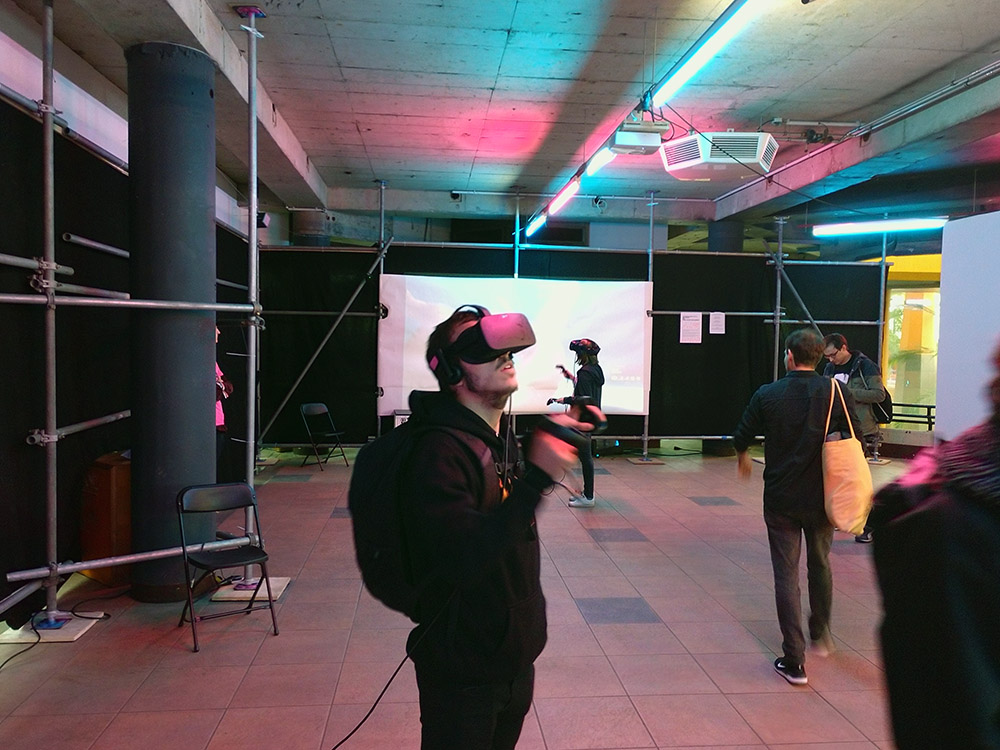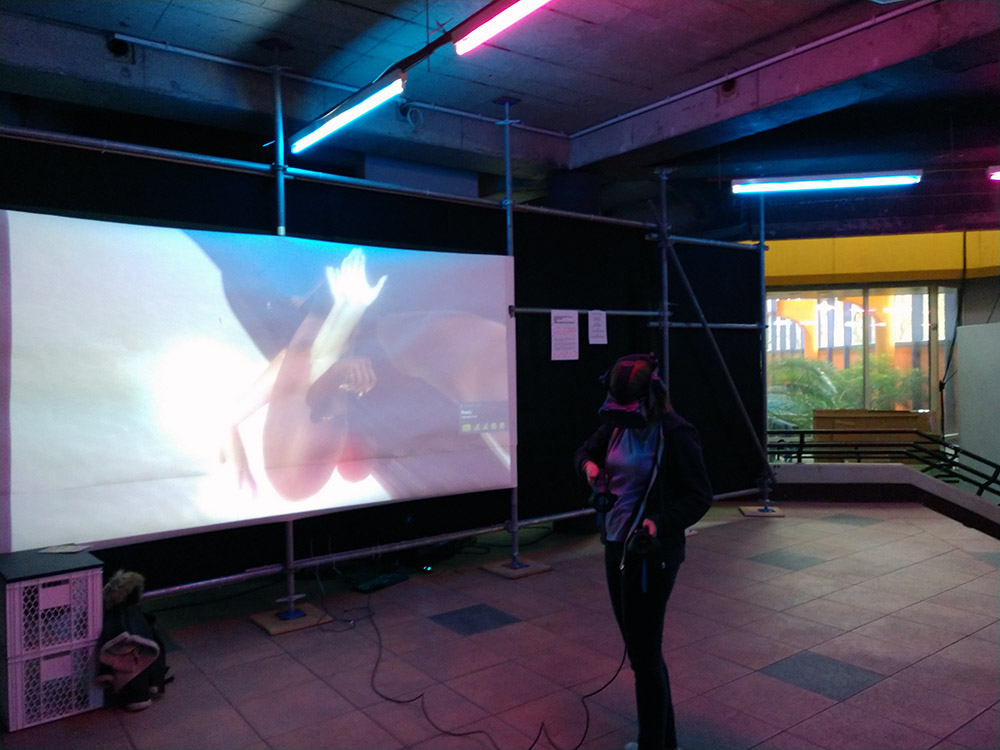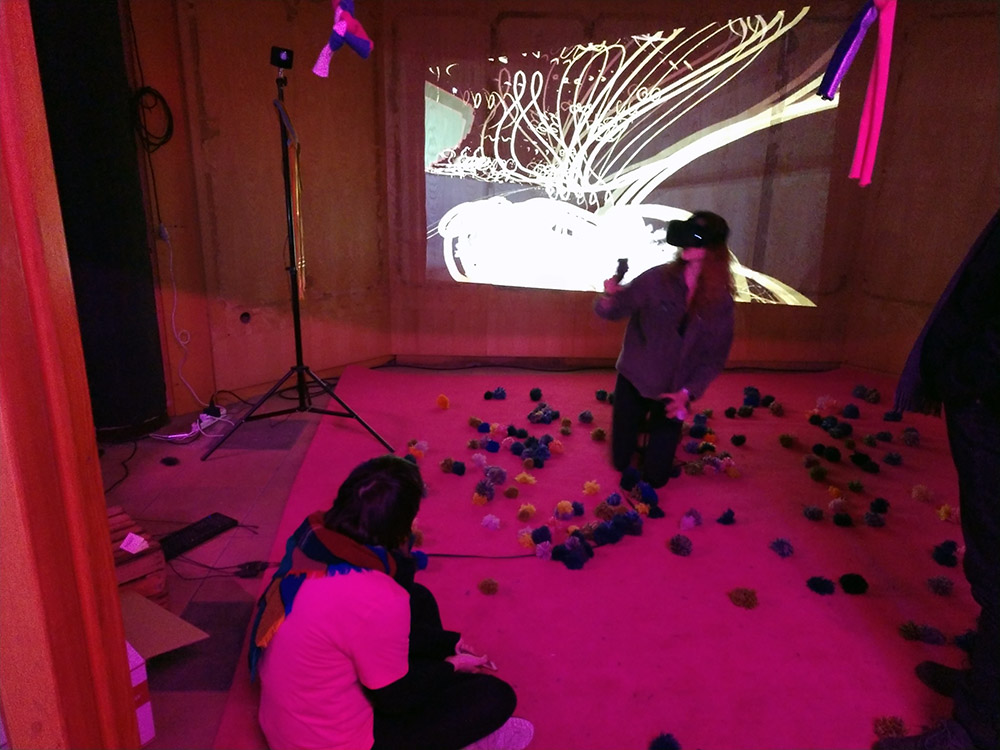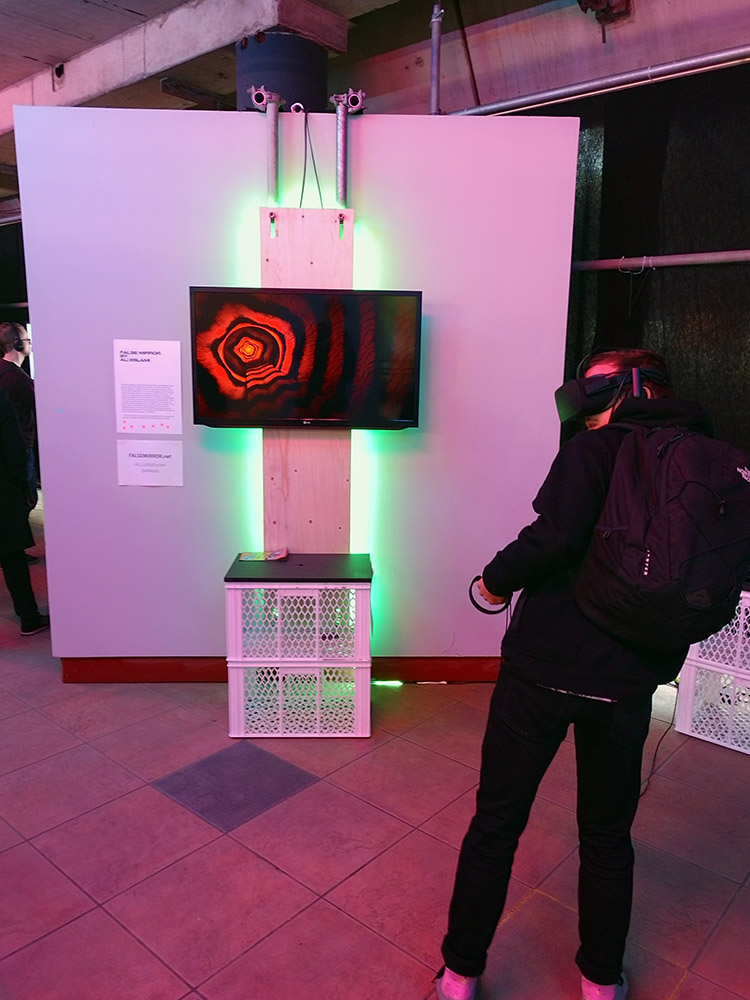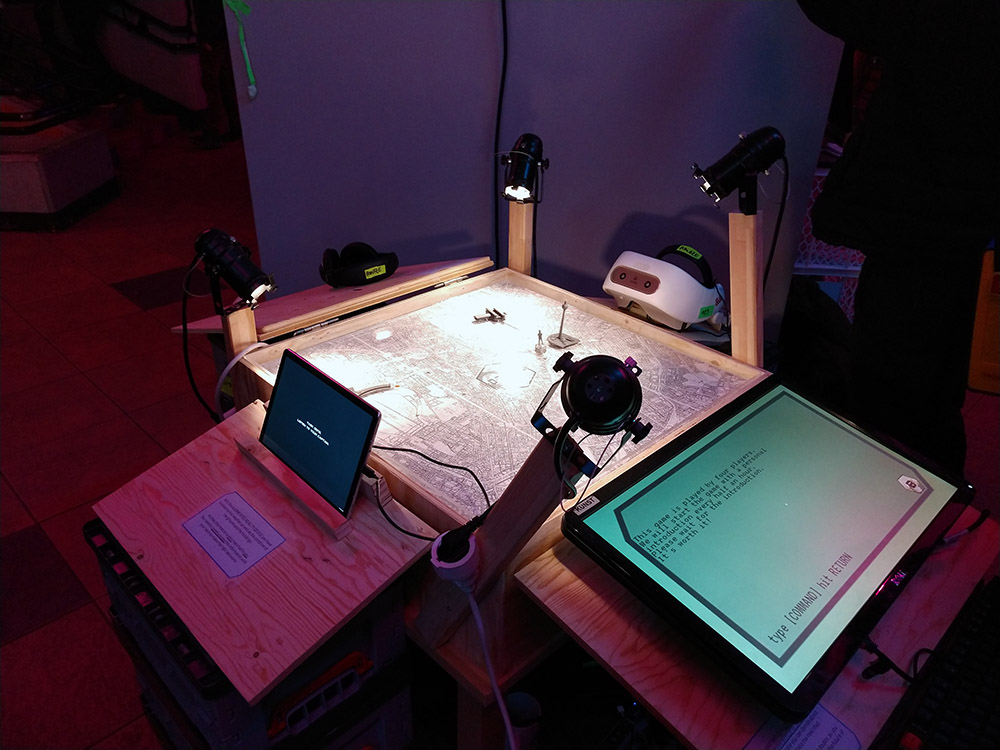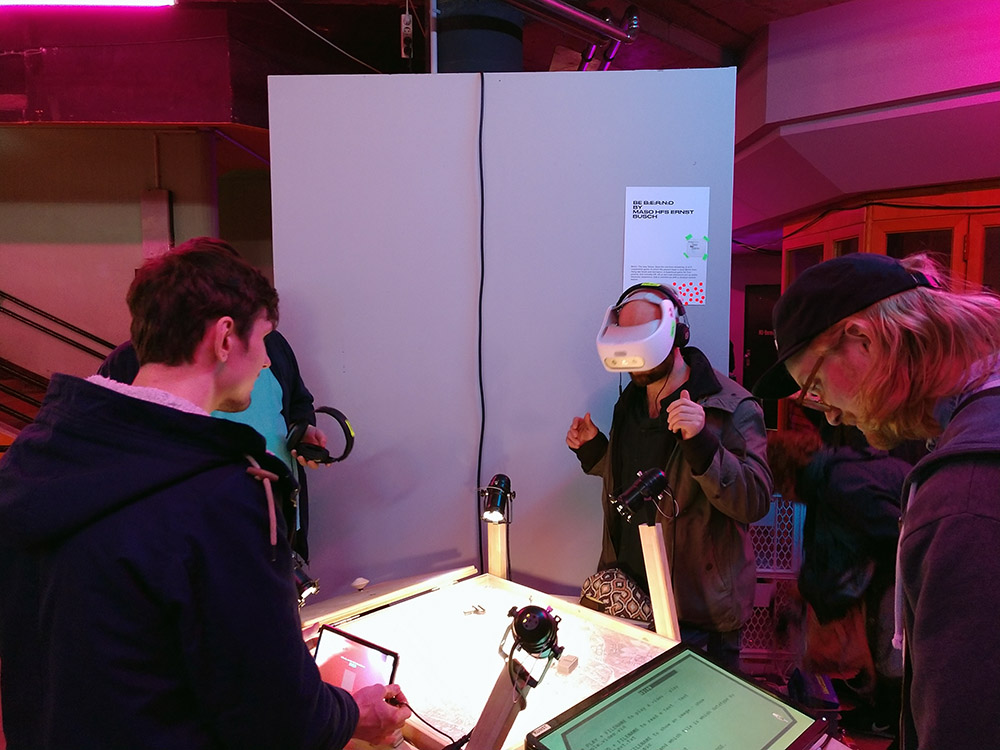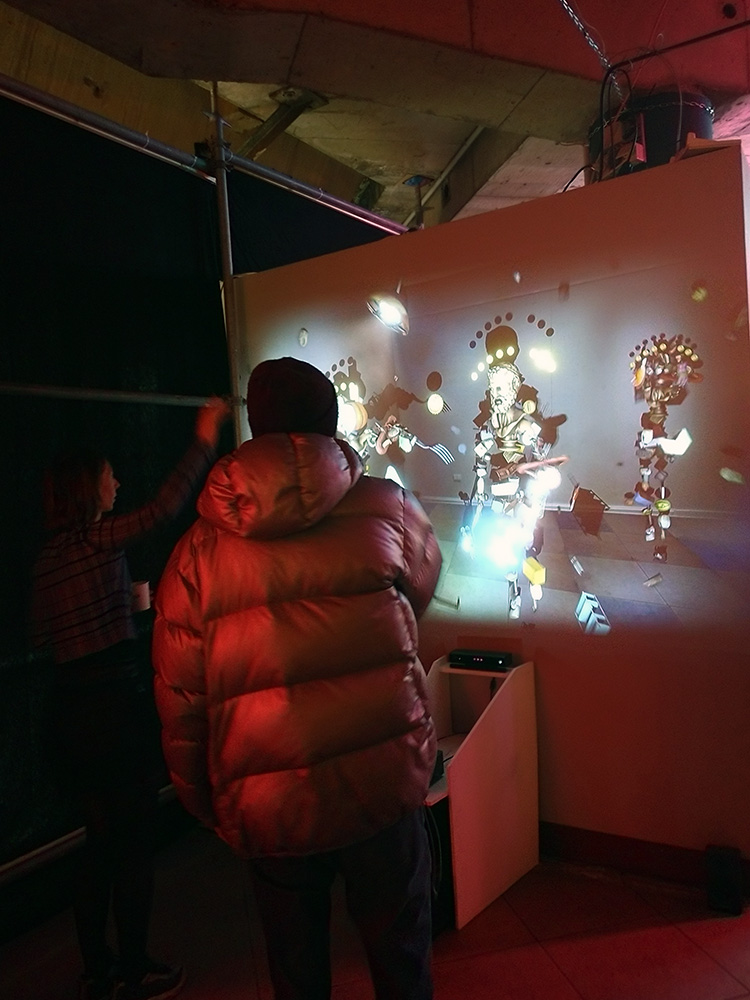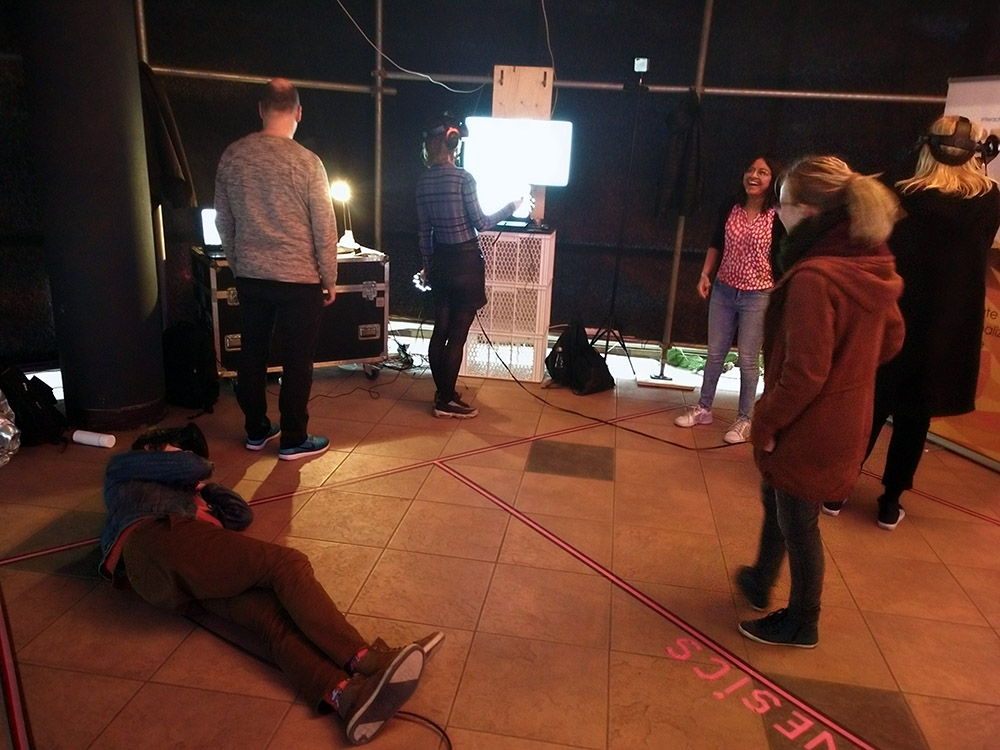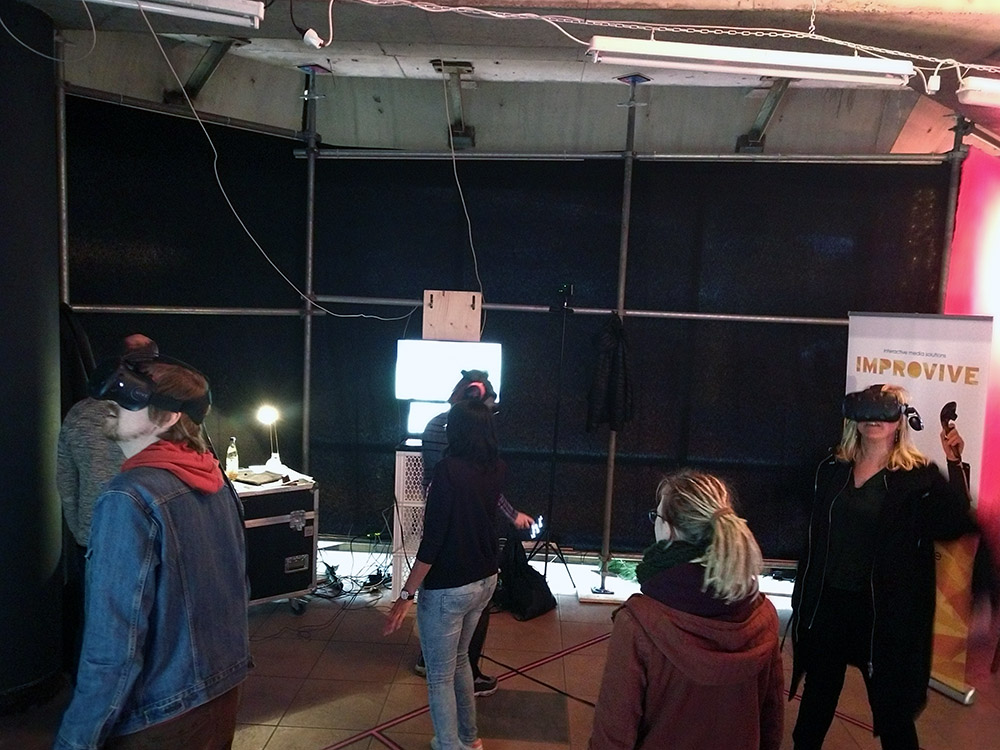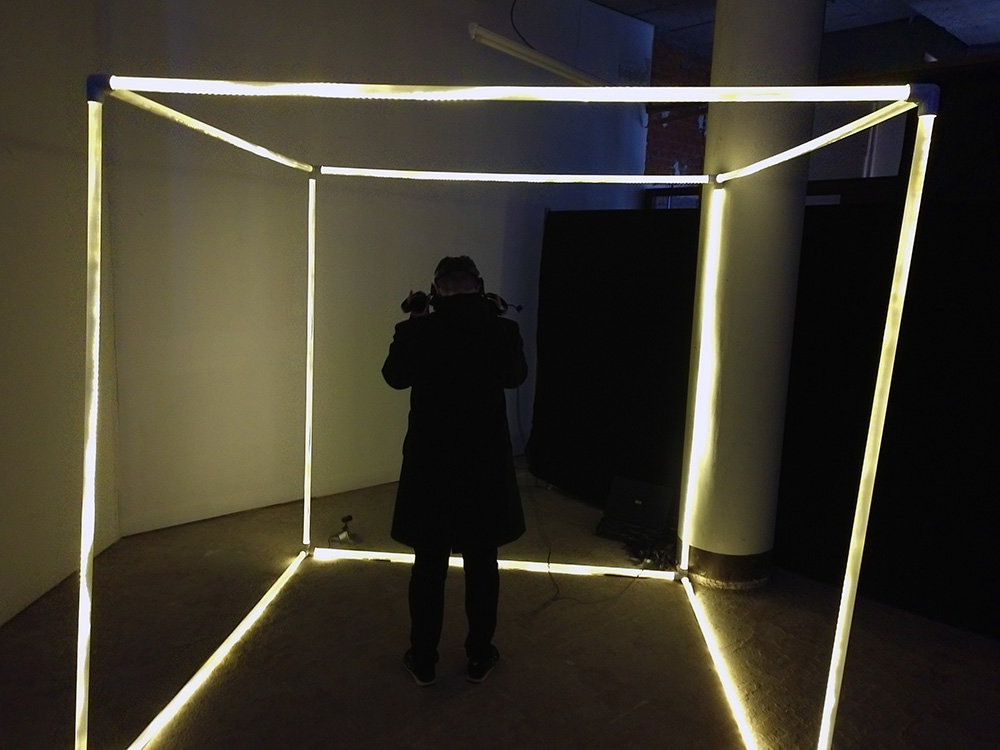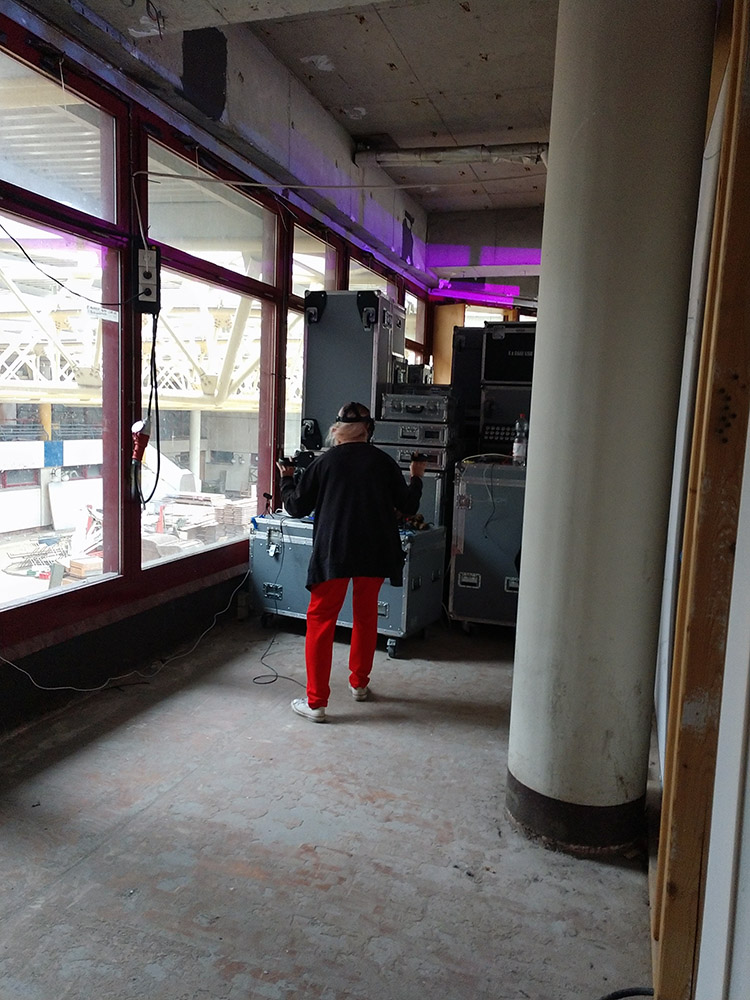In contrast to most event platforms of this year’s Berlin Gamesweek, the Amaze Festival positioned VR, not in a fringe area, but dedicated half of the show floor to VR installations. Originally coming from an independent fringe area of the game industry itself, Amaze now stands as a central pillar of Berlin Gameweek for experimentation, inspiration and trend indication in an increasingly diverse industry environment.
Cooperation in virtual space and time and accross different media perceptions was one major trend to be seen and experienced in the VR installations. HanaHana motivated the player to dive into creative landart by designing virtual environments in VR that could be used by other players following the previous ones. These virtual landscapes could even expand into the real world by means of trackers in the installation room, effectively connected to objects and areas in the virtual space like in Peaceful Garden VR.
A student game installation project simulated environmental dangers on a real Berlin city map where players had to exchange digital information provided by VR, AR, audio and text, to overcome critical situations. The VR online platform False Mirrors already prepares for a situation after the great collapse by offering access and design features for a posthuman living in a completely virtual environment.
Challenging perception and communication in VR was another trend to be seen at Amaze this year. The players were confronted with unexpected game situations and information overloads forcing them to make choices and learning efforts to get along. The mobile VR game Ngimurok introduced African rhythm and story elements by making the player sing and clap in Karaoke style. Audio now becomes a prominent element in these installations, especially when related to the text.
Locus Solus immersed you in a multi-level mirrored Mannierist virtual world, where orientation and interaction already captured your attention, while reading a philosophical novel to you. Virtual Materialism played on the same attention fork by offering you an avatar for coin collection in a Kinect game, while reading a philosophical essay to you. Interacting and reflecting the action at the same time becomes a dramatic conflict with sensory overloads in virtual environments.
A bit less dramatic but still challenging were multiplayer installations motivating for performance participation. The quiz game VR installation Kinesics puts players on separate platforms in the same virtual world, demanding them to act out given keywords via long-distance pantomime without audio and speech devices. The award winning VR installation Kassinn plays even further on the theatrical aspects of VR: the player is put into a virtual escape room where two voices provide him with contradictory information how to get out of this cube situation. One of the voices is a game element, the other one a real actor joining the player as an avatar outside of his virtual jail. A game of trust begins between information and communication, interaction and dialogue, rule and debate.
While the VR industry is still looking for more intuitive and practicable handling for consumers, the experimental art space of Amaze already expands and overloads upcoming limitations and focus areas. The findings are inspiring for future developments in VR whenever mechanical multimedia interaction is left behind. But this exposition needs upgraded booking management to provide all curious and open-minded people with access to limited experience slots.

